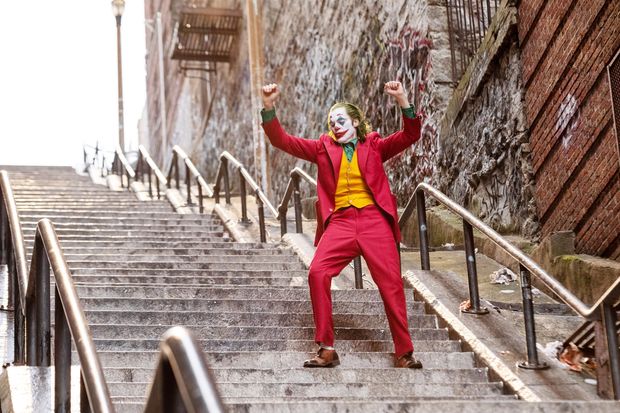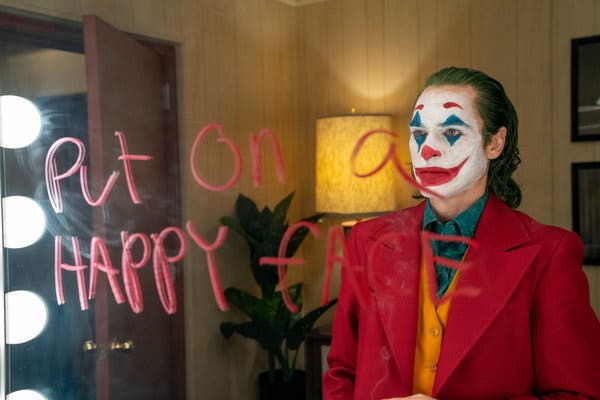By Georgia Reed
Released on October 4, 2019, The movie Joker is an rated-R thriller/drama that follows the downward spiral of a mentally-ill man in Gotham City in 1981. This movie was released on October 4, 2019.
Arthur Fleck, played by Joaquin Phoenix, has been disregarded by society his entire life. Beaten and bullied, Arthur finds it hard “smile and put on a happy face” as his mother Penny Fleck (Frances Conroy) recommends. Arthur feels invisible to the world around him and wants desperately to be seen. Arthur works as an entertainment clown, wearing the iconic face paint that later becomes a unifying symbol for the poor citizens of Gotham.

He finds a way to cope with his pain following a vicious attack by some teens when he is loaned a handgun by a coworker. During the attack, Arthur is unable to fight back and faces employment difficulties in the attack’s wake. He uses violence as a means to cope with his feelings of invisibility.
In a time where a rundown Gotham City is dominated by wealthy men like mayoral candidate Thomas Wayne, Arthur gains a following from the repressed poor of the city. He gets a taste of the recognition and support he has always desired when his face, in full clown makeup, is pasted across television and newspapers throughout Gotham.
Arthur is later fired from his job when the illicit handgun falls from his clown costume during a visit to a pediatric cancer ward. In a dizzying series of events that includes withdrawal of his state mental health benefits and access to medication and public humiliation, he falls further into insanity. This drives him further into madness. Arthur finally changes completely into Joker and his transformation is complete.

This movie was both disturbing and fascinating. It was hard to watch someone struggle and endure rampant abuse. As a viewer, I felt sympathy for Joker, even though he is a villain. His whole life he’s been taken advantage of and hurt by those more powerful than him. Yet, with gun in hand and his face eerily painted, he is able to become visible to the world as a symbol of protest.
I felt that Joaquin Phoenix captured the Joker perfectly. In scenes where Arthur/Joker is dancing, he moved his abnormally-thin body in strange angular movements that do not seem to fit together. Through his hunched position, the viewer can see his pain and sadness. Once he fully becomes Joker, his movements and demeanor are much more confident. His sadness transforms into anger and he feels support form the protestors also dressed as clowns. The movie did an excellent job at showing how the crazed, maniacal Joker came to be.
This movie was unique in the fact that Joker is the main character and the plot centers around his transformation from man into villain. In most movies , the Joker is used as a supporting character, an antagonist to Batman.

Overall, I feel that the movie accomplished its intent. The movie was unafraid to take an in-depth look at mental illness and never sugar-coated or glossed over any part of it. It showed viewers how a lonely and beaten down man became the infamous Joker.
The movie’s gritty depiction of violence and mental illness has led to some controversy. Some critics are worried Joker is a guide for troubled men to turn to violence as a way to release frustrations, while others believe that the movie is revolutionary and a huge step forward for the movie industry.
Personally, I enjoyed the movie although it was, at times, very difficult to watch. I would recommend this movie for adults and teens, but not for children under the age of 13. I would give this movie 8.7/10 stars.





